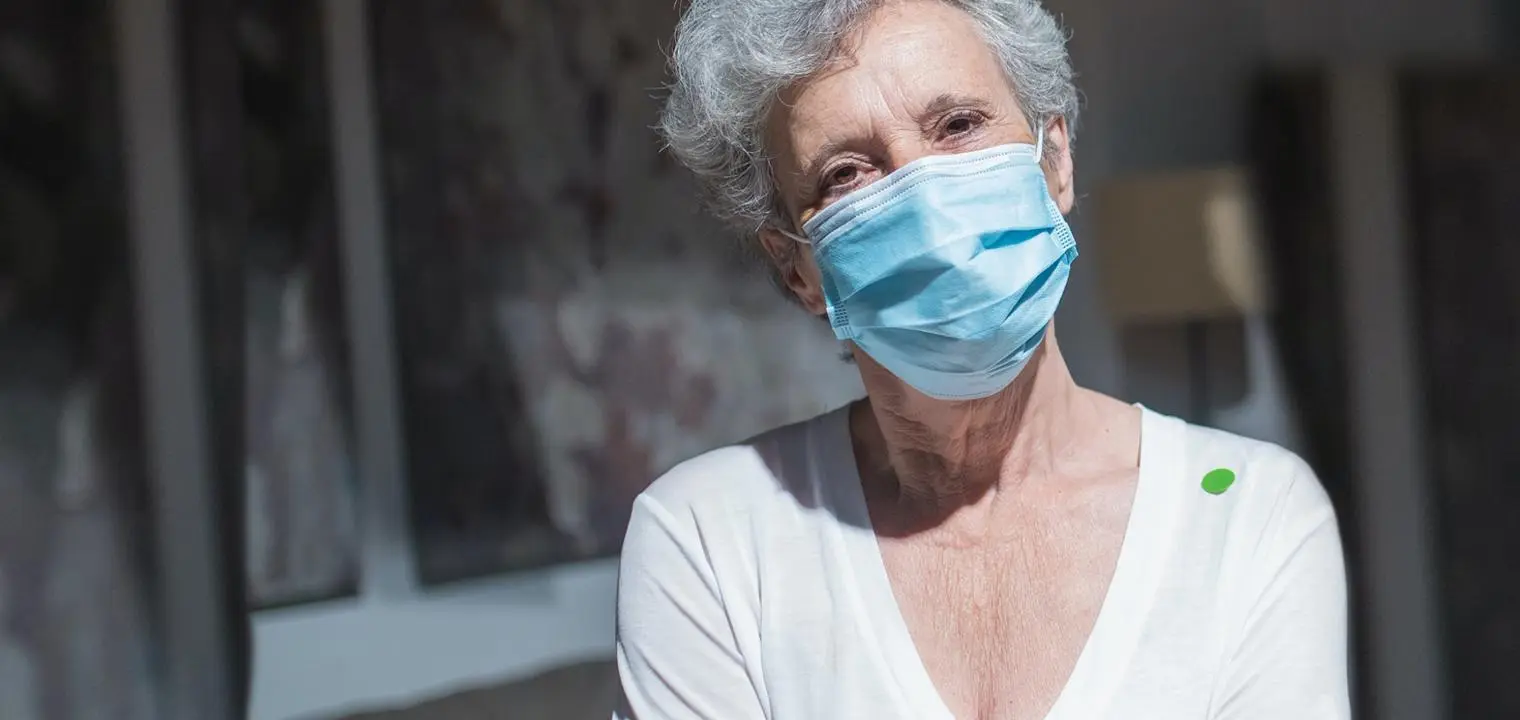Registered care home managers’ experiences of responding to the national care home visiting guidance in England during the pandemic

Contents
Care homes made frequent headlines during the COVID-19 pandemic, with mortality rates for care home residents much higher than for other groups in society, particularly during the first wave. Reasons for this included residents’ age, frailty and comorbidities, congregate living arrangements, and frequent, close contact with caregivers. In common with many other countries, the Government in England responded by restricting family visits, with only limited exceptions including end of life. While restrictions in society at large were slowly eased following the initial national lockdown (March to May 2020), care homes remained largely closed to visitors.
Formal written guidance on care home visiting was not issued in England until late July 2020. This required that care homes develop “a policy for limited visits” to be “made available and/or communicated to residents and families”. The guidance designated the registered manager as responsible for their care home’s policy but stated that they should be guided by advice from the local director of public health and other local regulators.
The guidance recommended the use of window, screen or garden visits, a single visitor and use of personal protective equipment (PPE). There were numerous later updates to the guidance involving, for example, changes to the number of permitted visitors or to self-isolation rules following visits outside of the home (eg, for hospital appointments). Testing and vaccinations were available from December 2020. However, the majority of care homes continued to implement significant visiting restrictions throughout 2021 and into 2022, including what became widely termed “blanket bans”. An “essential caregiver” role, where a designated family member was able to visit subject to the same protocols as staff, was introduced in March 2021 but not widely implemented.
Managers expressed concern about implementing restrictive measures that they thought were disproportionate, or even inhumane, without what they saw as a clear framework for considering wider risks and harms, and human rights.
Our methods
Our study examined how care home managers in England perceived and used the national care home visiting guidance. For this, we undertook a qualitative, open-ended survey with a diverse sample of 120 care home managers across England and conducted follow-up in-depth interviews with 40 of these. Data was analysed thematically by a multi-researcher team.
Our findings
… on the timing of the guidance
Some care home managers thought the lateness of the guidance understandable given that the pandemic was “an unknown situation”. One said, “the Government has moved quickly in a number of areas and should be applauded for that”. More commonly, however, managers described it as “slow, incredibly slow”, reflecting that Government was “not really there for us”. By the time the guidance was issued, some also saw it as “lagging behind” and not telling them anything they didn’t already know.
… on the guidance document
The guidance was often thought “lengthy”, “cumbersome”, and “unclear to follow”. Managers wanted documents that were more operationally-focused. Suggestions included key point summaries, easy-to-follow flow charts, sample documents, standard templates and materials that could help explain restrictions to residents and families.
… on updates to the guidance
Updates to the guidance were frequent and communicated through televised Government announcements, often on Friday, with written guidance not available until sometimes days later. This made it difficult for care homes to implement changes in a timely way and could cause confusion for families and staff.
… on whether guidance was clear
The guidance was widely considered “open to interpretation”. Some saw this positively, viewing it as “a good starting point” or “useful foundation” and commenting, “at the end of the day, they are only guidelines”.However, more commonly, managers said that the guidance was “vague”, ”ambiguous”and “easy to interpret it however you wanted”, with some saying they “struggled to develop workable practical policy from the guidance”. Some thought that, in effect, this unfairly shifted responsibility for policy on care home visiting to care home managers and their care home groups.
Managers found many aspects of the guidance to be impractical or unethical for people with dementia … and commented that 'dementia appears to have been ignored'.
… on the role of local regulators
Managers often described a lack of coordination between local regulators and described having to negotiate “a series of local guidances” that were sometimes unaligned, conflicting or appeared inconsistent with Government guidance. Local regulators commonly adopted restrictive interpretations of the guidance, with some managers saying that they felt ”over-ruled”.
… on balancing infection against wider risks and harms, and human rights
Initially some welcomed the priority given to infection control in the guidance, saying they “made no apologies” for keeping their “home and staff safe”. However, as the pandemic progressed, managers were commonly concerned about implementing restrictive measures that they felt were disproportionate, or even inhumane, without a clear framework for considering wider risks and harms, and human rights.
… on the needs of people with dementia
Managers commonly commented that ”dementia appears to have been ignored”. This was often difficult for managers to understand given that over 70 per cent of care home residents have dementia. Although, initially, some residents with dementia were thought to have responded positively to the quieter environment of a home without visitors, more generally, they were thought vulnerable to the loss of family visits and usual routines, with impacts including loss of appetite, apathy, distress, confusion and depression, increased risk of falls, and deterioration in health and function.
Managers also found many aspects of the guidance to be impractical or unethical for people with dementia. They noted that “people with dementia don't understand that there is a pandemic”and cannot voluntarily observe restrictions. Another noted that a “lack of hugging or cuddling is not just inhumane but practically unmanageable”. Managers facilitated compassionate visits where possible, sometimes ”turned a blind eye” to physical contact during in-person visits and, on occasion, challenged regulators. Where staffing allowed, staff kept residents company and engaged them in activities, commenting that “unlike a lot of the elderly community, they were never isolated, they always had company here even if it wasn’t their family and friends”.
Some found volunteers to, for example, escort visitors and help with testing, and essential caregivers invaluable and wished they had been able to employ these earlier on.
… on end of life visiting
End-of-life visiting was thought insufficiently discussed in the guidance. Managers sometimes said that the definition of end of life and what was allowed during an end-of-life visit were unclear, leading to varied practices. This was challenging given most residents have limited life expectancy (an average 24 months for care homes without nursing and 12 months for care homes with nursing).
… on sources of information and support
Sources of information, advice and support for managers included that provided by local regulators, care home groups, external organisations and various forms of peer support. Support from local regulators such as local authorities and local health protection teams varied in its accessibility and quality. Larger care home groups offered their managers dedicated central, and sometimes regional, support. Managers of standalone homes or in smaller groups were more reliant on external support, but felt that they could better generate “bespoke solutions”and “react quickly to changes”.
While wider support was initially lacking, later on, managers were “deluged with information” with “too many people doing the same job”. While not everyone’s experience of peer-based support was positive, well-facilitated peer groups and groups where senior staff or experts were available to address questions were especially valued.
… on workforce
Under-staffing was common, because of COVID-related absences and pre-existing staff shortages. At the same time, staff were expected to rapidly implement new visiting systems and policies with limited training or preparation. Managers worked long hours and many described experiences of moral distress, anxiety, depression, exhaustion and burnout.
Managers also varied in their leadership skills and experience. Some found volunteers to, for example, escort visitors and help with testing, and essential caregivers invaluable and wished they had been able to employ these earlier on. However, they were not widely used and some described lacking support for implementing the essential caregiver role.
Final thoughts
These findings point to the importance of improving the preparedness of social care systems for public health emergencies such as the COVID-19 pandemic as well as addressing long-standing structural problems in long-term care, which include fragmented systems of local governance and poor national-local coordination, workforce challenges that include a lack of career development and parity of esteem with the NHS, and high levels of vacancies, and a lack of communication channels with reach across the diversity of care home providers. Findings from this research also inform discussion about a potential new care supporters law, which would give care home residents the right to in-person contact with a care supporter at all times https://bills.parliament.uk/bills/3470.
Download a PDF version of this article






